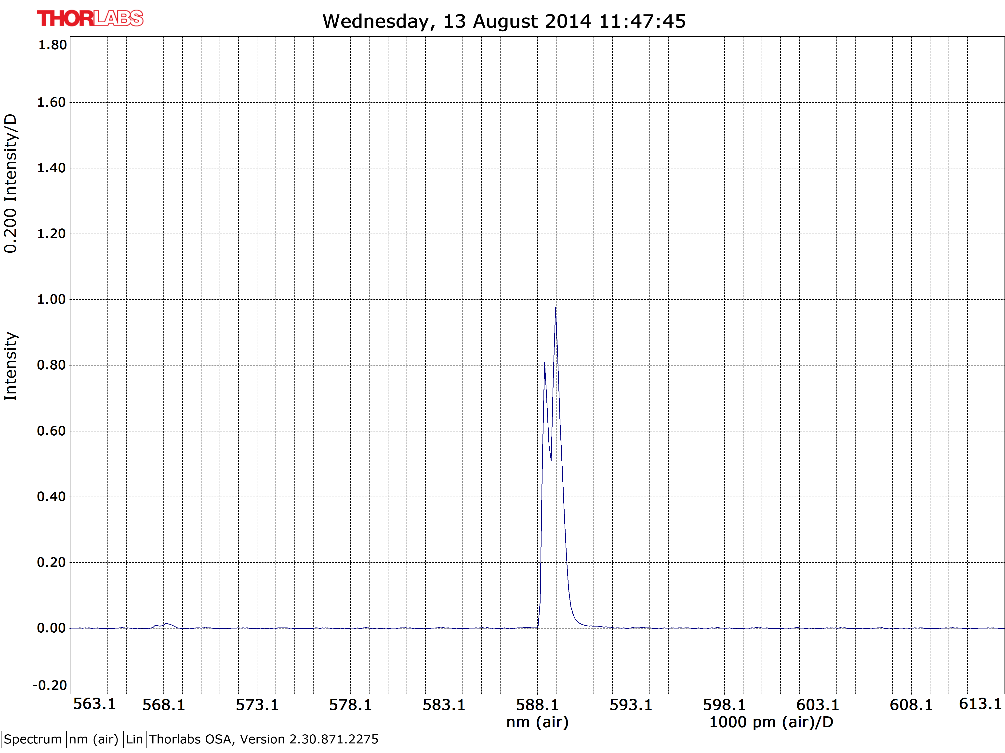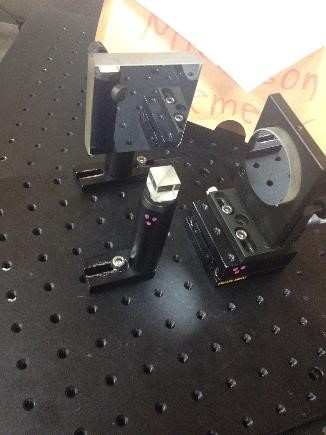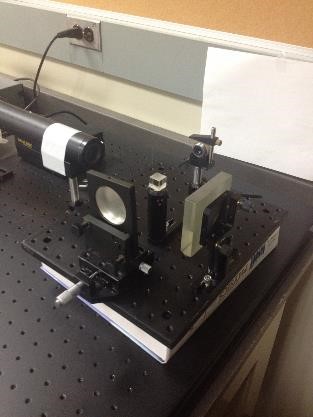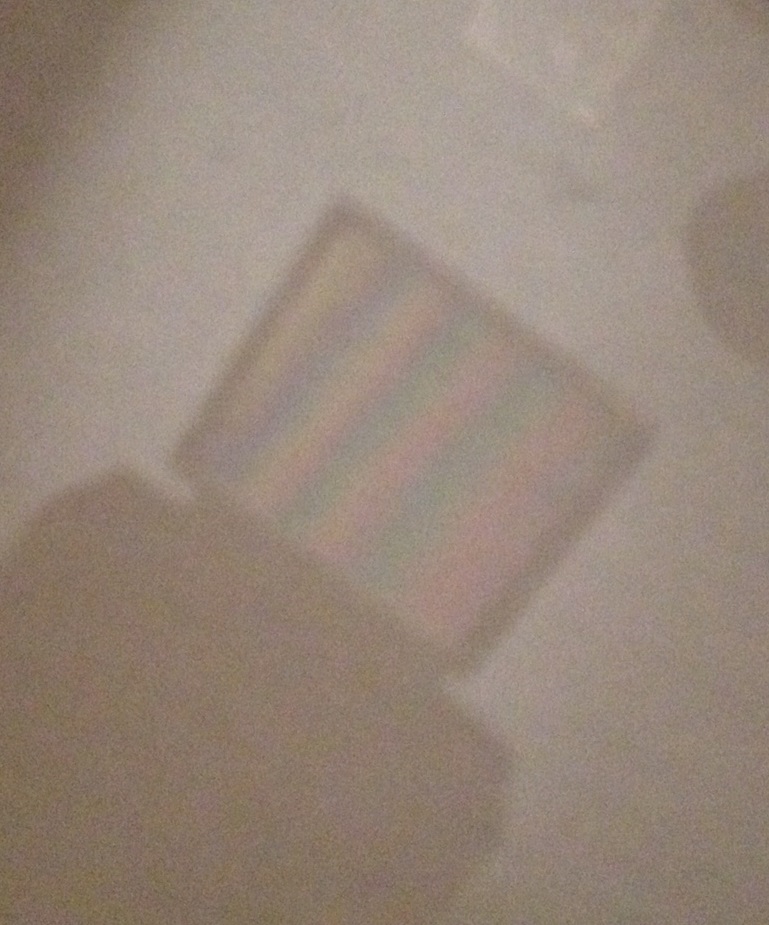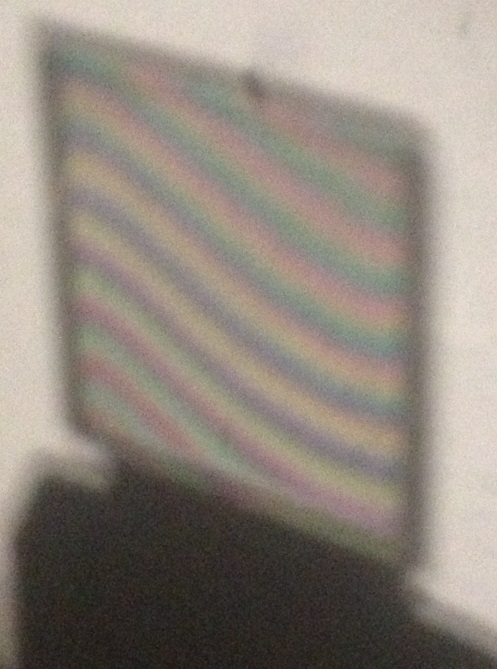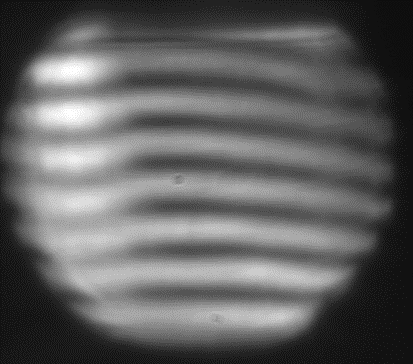White light Interferometry
Papers
- Improved White Light Interferometry on Rough Surfaces by Statistically Independent Speckle Patterns. Bernhard Wiesner, Ondrej Hybl, Gerd Hausler.
- -Starting paper
- -Good setup with new light source for improving uncertainty
- Three-dimensional sensing of rough surfaces by coherence radar.Thomas Dresel, Gerd Hausler, Holger Venzke. March 1992.
- -Good overview of how coherence radar works
- -Interferometer setup
- Information Efficient White-Light Interferometry.Ondrej Hybl, Gerd Hausler. 2010.
- -More efficient ways of scanning objects
- White-light interferometry on rough surfaces-measurement uncertainty caused by noise.Pavel Pavlicek, Ondrej Hybl. November 2011.
- -Math and Uncertainty equations for WLI.
- Surface profiling by frequency-domain analysis of white-light interferometers. Peter de Groot, Lesile Deck. 1994.
- -basic idea of how frequency-domain analysis works
- Constrcution and Validation of a White Light Interferometer. Karthick Sathiamoorthy, Tanjim Ahmed. Novemeber 2010
Links about Michelson Interferometers
- Michelson Interferometer Lecture from University of Manitoba.
- Michelson Inteferometer Experiment U. Calgary
- Using a M.I. to find wavelength Virtual Amrita Laboratories.
- Michelson Interferometer Experiment with Diagrams Colorado.
- Michelson-Morley Experiment SFSU.
- Michelson Interferometer & Fourier Transform Spectrometry Washington.
- -Lab prodceudre for getting from laser light to white light
- Online applet modeling a Michelson Interferometer GW optics.
- Optical Interferometers William and Mary.
Interferometer Set-up
- Bread board (120 holes)
- cm scale translation stage
- Cube beam splitter
- Two adjustable mirrors
- Microscope objective lens
- f=25.4mm lens
- HeNe laser (632.8 nm)
- Sodium lamp
- White light source
- CMOS camera with 50mm lens
- Piece of paper as a screen
Equipment
Sodium Lamp
Sodium-vapor lamps uses excited sodium atoms to create its signature yellow colored light. It is a great monochromatic light source and is very efficent due to the fact that is uses all its supplied current to create light.[1] Sodium lamps get very hot so when in use one has to be careful about touching the bulb or casing.
While switching the bulbs on one of our lamps, we noticed that the bulb seemed to flicker when looked at through the corner of your eye. When trying to take an image or a video of the lamp a visual band of darkness could be seen moving across the light. To test whether the lamp was flickering, we used a photodetector attached to an oscilloscope, if the lamp is actually flickering a pulse like image should appear on the oscilloscope. After some tuning on the oscilloscope, a pulsed wave appeared indicating that the lamp was indeed flickering. When seen from the corner of your eye, the lamp appears to be flickering quite fast but when viewed through a camera it slows down. This occurs because of the FPS rate of the camera and of the frequency at which the lamp is flickering at. I believe if the FPS rate is the same as the lamp's frequency, the lamp won't appear to flicker while if the fps rate is above or below the lamp's frequency the flickering will appear faster or slower.
White Light Source
The white light source that we used to align the interferometer was a Fiber-Lite Model 3100 with a EKZ lamp. In general white light sources have a pretty broad optical bandwidth, in this case the white light source was emitting visible white light ranging mainly from 490 nm to 742 nm, which was measured using the lab's spectrometer. It is also possible to have a white light source that emits in non-visible spectral regions.[2]

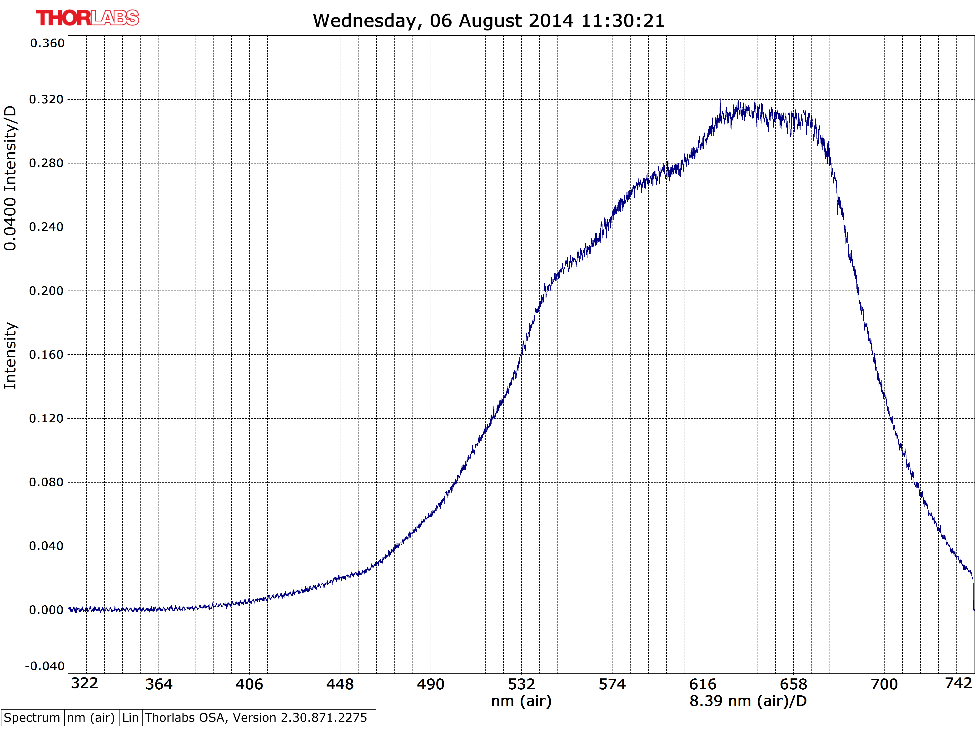
From Laser Light to White Light
Loosely following the procedure described in this lab experiment done at William and Mary, it was possible to align the interferometer so as to produce white light fringes. Progressing from laser light to white light in the steps described gives an easier transition for the changing coherence and a much easier time for finding interference fringes.


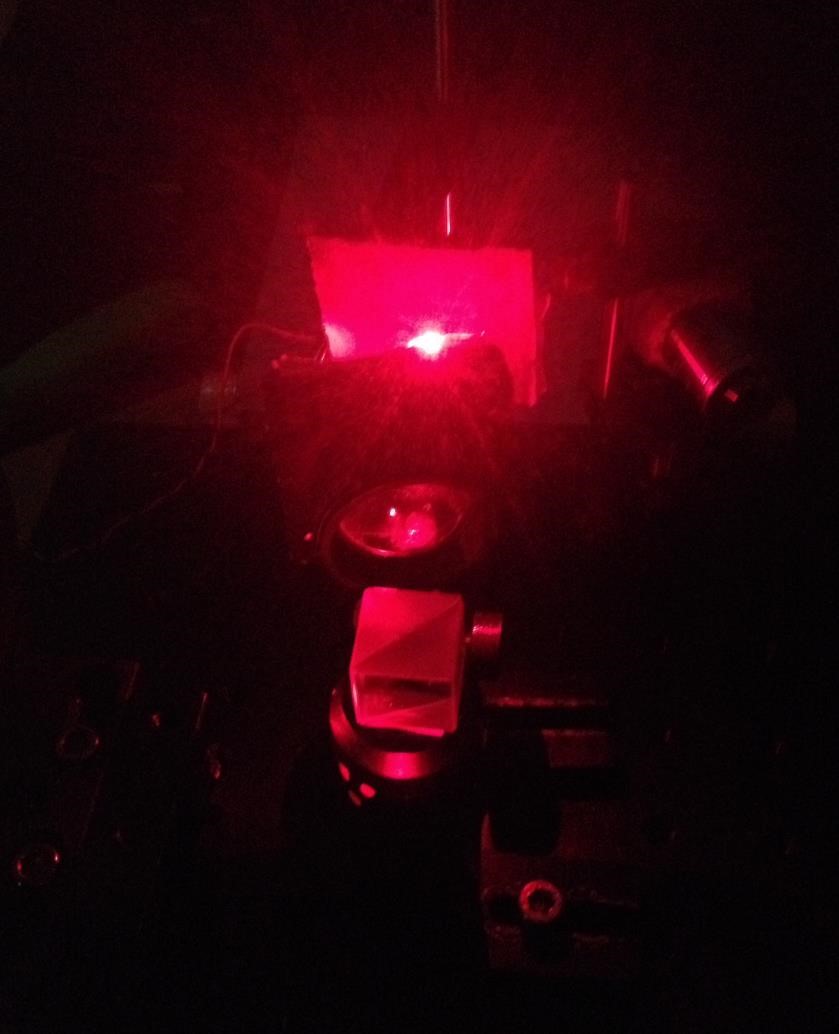
Progression of Set-up
Interference Patterns
References
[1]"Sodium Lamp". M. Whelan,Rick DeLair. http://www.edisontechcenter.org/SodiumLamps.html
[2]http://www.rp-photonics.com/white_light_sources.html

